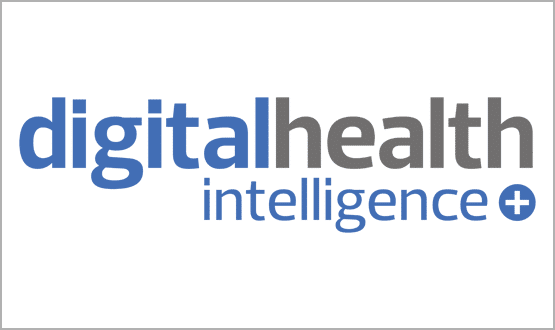An Epic journey
- 2 July 2015

It’s been three years since Cambridge University Hospitals NHS Foundation Trust became the first in the UK to sign with Epic to deliver an electronic patient record.
It wasn’t just a novel procurement, it was a pricey one, too. The entire contract – with Epic providing the software and Hewlett Packard the infrastructure – is worth £200 million over ten years.
With the first of company procurement in the UK, high price tag, and sheer scale of Cambridge’s eHospital ambitions, there was a lot riding on the preparation for and implementation of the system.
So it’s little surprise the go-live date – 26 October 2014 – is etched onto the mind of chief operating officer Fran Cousins. “It was the equivalent of Sweden moving from driving on the right to driving on the left,” said Cousins, who was speaking at an event hosted by Hewlett Packard in London.
Eight months on, and the effects of that transformation are being seen at the trust, which runs Addenbrooke’s Hospital and The Rosie Hospital.
Dr Afzal Chaudhry, chief clinical information officer, said the use of papers notes for inpatients had reduced by 80%, from 8,700 to 1,700 uses per month, while for outpatients there has been a 40% reduction, from 40,000 to 25,000 per month.
With savings of £115,000 per quarter the financial benefits are also emerging. Other initial savings include £216,000 on rationalising IT contacts, £210,000 on reduction in in-house IT staff, and around £270,000 in time saved by staff on tasks that can now be carried out on handheld devices.
But considering the scale and novelty of the project, a key question that was still being asked at the event was why Cambridge University Hospitals went down this route.
Why set out?
Cousins said the plan for creating an eHospital started back in 2010, after the trust’s then-chairman, Mary Archer, sent out an email asking how quickly it could become a digital trust.
At the time of Archer’s message the trust was “pretty much where most of the NHS is today”, according to Cousins, with a multitude of clinical systems – and some areas in which there were no systems at all.
The patient administration system – CSC’s iExpress – dated back to 1995, and there was “very poor integration” of systems across the trust, which had its share of tools developed in-house.
Cousins also noted that the hardware on which systems were running was “terrible”, with no wireless network and no infrastructure that was resilient to the extent it needed to be.
It was a technical landscape that couldn’t come close to supporting Epic, and Cousins said the best decision the trust made was to procure infrastructure as a service. This meant HP not only refreshed the hardware, but was on hand to support the trust’s preparation and to provide ongoing technological support.
Getting ready
Once procurement was completed back in April 2013, the intense build up to system deployment began. Paramount for Cousins was ensuring that 10,000 staff had the necessary information about the system, and the skills that they would need to use it.
Her advice for trust going through a similar process is that there is a minimum amount of training every member of staff needs to go through. “There is no group of clinicians – doctors, nurses or pharmacists – that is too important to train. Everybody has to have the capability and competence in the system.”
Ahead of go-live, the trust carried out several dress rehearsals that helped prepare staff for situations that might otherwise be hard to predict.
These rehearsals brought several points to the trust’s attention. For instance, it came across clinicians who weren’t aware of the keyboard flip tray on anaesthetic trolleys – and discovered that the extra incubator needed following the birth of twins could block access to the computer needed to access information about them.
Going live
When Cambridge University Hospitals eventually went live last October, Chaudhry said the trust treated the situation as if it was handling an internal major incident, with staff giving up their own time to handle calls about the use of the system.
For the next six weeks, it kept an on-site command centre running 24/7, staffed by 150 people. In the first five weeks after go-live, it received more than 22,000 calls.
Chaudhry acknowledged the figure seemed high, but that this was “par for the course” for the scale of what Cambridge University Hospitals was doing.
The trust was also subjected to external review from the outset. It had a visit within two weeks from the chief information officer at Yale Health System, who had worked on 13 previous Epic installations.
“He said to us and our colleagues – who were quite stressed at the time – actually you guys are doing a good job. You are much further on than you should be.”
For Chaudhry this highlighted one of the issues with being the first UK site to take on Epic – the lack of direct comparator to chart the deployment progress.
“Whilst we were looking for comparisons with Epic installations in the US, Amsterdam and Canada, people always had a tendency to say: ‘That’s not quite the same as in the NHS’,” he said. “But actually, in the main, patients are patients, doctors are doctors – and there isn’t that much difference. “
What’s changed
Although they have received less focus, the infrastructure changes have been no less great. Across the trust, there are now 1,300 wi-fi access points. Staff have access to 420 Rover devices, which combine an iPod Touch with a barcode scanner from Honeywell.
These devices contain the Haiku app, which provides clinicians with portable access to patient charts, while the Canto app provides a similar function on an iPad. When printing is required, it is handled by 539 wi-fi label printers.
Corrina Hulkes, head of inpatient nursing, told the event that the devices had freed up a lot of time for her staff and meant they had access to all the information they needed on the ward.
It hasn’t been easy to convince everyone of the benefits, though. There are clinicians who trained as students at Addenbrooke’s, and so have worked for years with a system that appeared to work for them.
“People did have a difficult time,” says Chaudhry. “Overnight, you take everything that they knew and put it all away – all the drug charts, all the anaesthetic charts.
“All of that went and we gave them a brand new system. The information was there, but it was presented in a different way.” Slowly, though, he feels that staff are coming round to new ways of working.
What’s next?
Although the go-live is now behind the trust, it is continuing to develop its use of the system. A major development now in progress is the use of My Chart.
This is a piece of software that allows patients to view their own records on a device of their choosing and add personal data from wearable devices and other home-based technology.
The deal with Epic also covers nearby Papworth Hospital NHS Foundation Trust, which is building its business case, with a decision to be made in the autumn.
For Cambridge University Hospitals itself, the next important date is October 2015 – one year on from go-live. This is the month the trust intends to keep existing paper notes, after which it will review the system on a quarterly basis.
As noted by Cousins and Chaudhry this is just the second year of a ten-year journey. There are more milestones to come.




